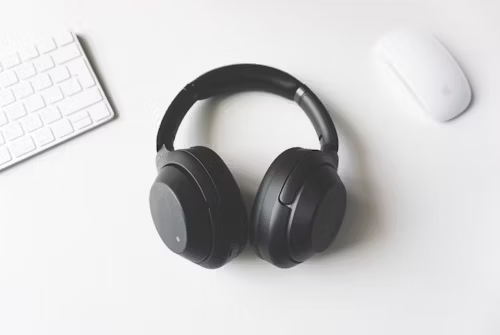From the hum of supermarket checkouts to the hiss of a café’s coffee machine, the human brain processes countless sounds daily. But for some people, background noise becomes overwhelming. They struggle to focus on voices or alerts, making communication and daily life difficult.
Sophie, a 25-year-old administrative assistant from London, knows this struggle well. Many people assume she is inattentive or distracted.
“I hear sounds, but I can’t always tell where they come from. I recognize voices but can’t process them fast enough,” she explained.
After normal results from a standard hearing test, Sophie saw a private audiologist. Further evaluation led to a diagnosis of auditory processing disorder (APD). This neurological condition makes it hard for the brain to interpret speech and sounds effectively.
A Growing Concern Among Audiologists
Some audiologists in England are concerned about the increasing number of young people experiencing APD symptoms. Many now wonder if prolonged use of noise-cancelling headphones plays a role.
Five NHS audiology departments report a rise in young patients referred for hearing problems. These individuals have normal hearing in tests but struggle to process sound. APD is common in people with brain injuries, neurodiverse individuals, or those with childhood ear infections. But now, more cases appear outside these groups, leading experts to question environmental influences like noise-cancelling headphones.
The Impact of a Silent World
Growing up on a quiet farm, Sophie never noticed any problems with sound. But after moving to London for university, she started struggling to recognize where sounds came from.
She avoided in-person lectures and preferred online classes with subtitles. “During lectures, everything sounded like gibberish. I couldn’t hear clearly,” she said.
Social situations were also difficult. She often left bars and restaurants early because of overwhelming background noise.
Her audiologist believes her habit of wearing noise-cancelling headphones for up to five hours daily could be a factor. Other audiologists share this concern and urge further research into how extended headphone use affects auditory processing.
Hearing vs. Listening
Renee Almeida, an audiology clinical lead at Imperial College Healthcare NHS Trust, stresses the importance of hearing different sounds. “This helps the brain decide what to focus on,” she explained.
Her team has seen more young people seeking hearing services in the past year. “Hearing and listening are different. We see that listening skills are declining,” she added.
Noise-cancelling headphones can protect the ears from loud or high-frequency sounds. But Lisa Barber, technology editor at Which?, warns that their transparency features vary. Some models block all noise, while others allow some background sounds.
A False Sense of Silence?
Claire Benton, vice president of the British Academy of Audiology, says blocking everyday sounds may cause the brain to “forget” how to filter background noise. “If you always wear these headphones, you create an artificial world where you only hear what you choose,” she explained.
High-level listening skills continue developing into the late teenage years. Excessive headphone use during this time could delay the brain’s ability to process speech and environmental sounds.
Despite increasing demand for APD care, NHS services remain limited. A UK-wide survey in 2024 by the British Academy of Audiology (BAA) and ENT UK found that only 4% of audiologists felt well-informed about APD.
For people over 16, the Royal National ENT and Eastman Hospital is the only NHS provider in England offering full APD assessments. The waiting list is currently nine months. Professor Doris-Eva Bamiou, who conducts these evaluations, said APD diagnosis takes time and requires extensive tests beyond a simple audiogram.
Changing Listening Habits
Since the pandemic, people’s engagement with sound has changed. Noise-cancelling headphones and subtitles are now more common. A YouGov survey found that 61% of 18-24-year-olds prefer watching television with subtitles, even though they have normal hearing.
Dr. Angela Alexander, audiologist and owner of APD Support, urges more research into how noise-cancelling headphones affect auditory processing, especially in children. “If we don’t study this link, what does the future hold? Many parents and teachers assume earplugs or noise-cancelling headphones help noise-sensitive children,” she said.
Dr. Amjad Mahmood, head of audiology at Great Ormond Street Hospital, also calls for more studies. The hospital’s APD clinic for under-16s has seen a major increase in demand, especially from children struggling in school.
Training the Brain to Listen
APD treatment can help significantly, and some people recover fully. Mobile apps with “word-in-noise” training exercises allow users to practice focusing on speech amid background noise. Other exercises help distinguish similar sounds, like “seventy” and “seventeen” or “free” and “three.”
Devices like microphones and low-gain hearing aids assist APD patients in specific settings, such as classrooms and meetings. However, adults outside education cannot access these tools through the NHS.
Dr. Alexander describes auditory scene analysis as the brain’s way of detecting threats. “I hear a fan above me, but my brain tells me it’s not important,” she explained. If someone’s brain stops processing these small cues, it can increase anxiety.
To lower risks, she suggests limiting headphone use, activating transparency modes to allow background noise, and choosing models that don’t fully block sound.
The Need for Further Research
Wayne Wilson, associate professor at The University of Queensland, agrees more research is needed to understand the connection between noise-cancelling headphones and auditory processing issues. But he acknowledges the challenge of controlled studies. Many factors influence APD, including sound types, noise levels, and exposure duration.
Sophie is set to begin APD treatment soon and feels hopeful. “When my boyfriend and I go to a bar, we often leave early because of the noise. It’s exciting to think that, after treatment, I might handle noisy places better.”
For more health and science updates, visit Financial Mirror.
